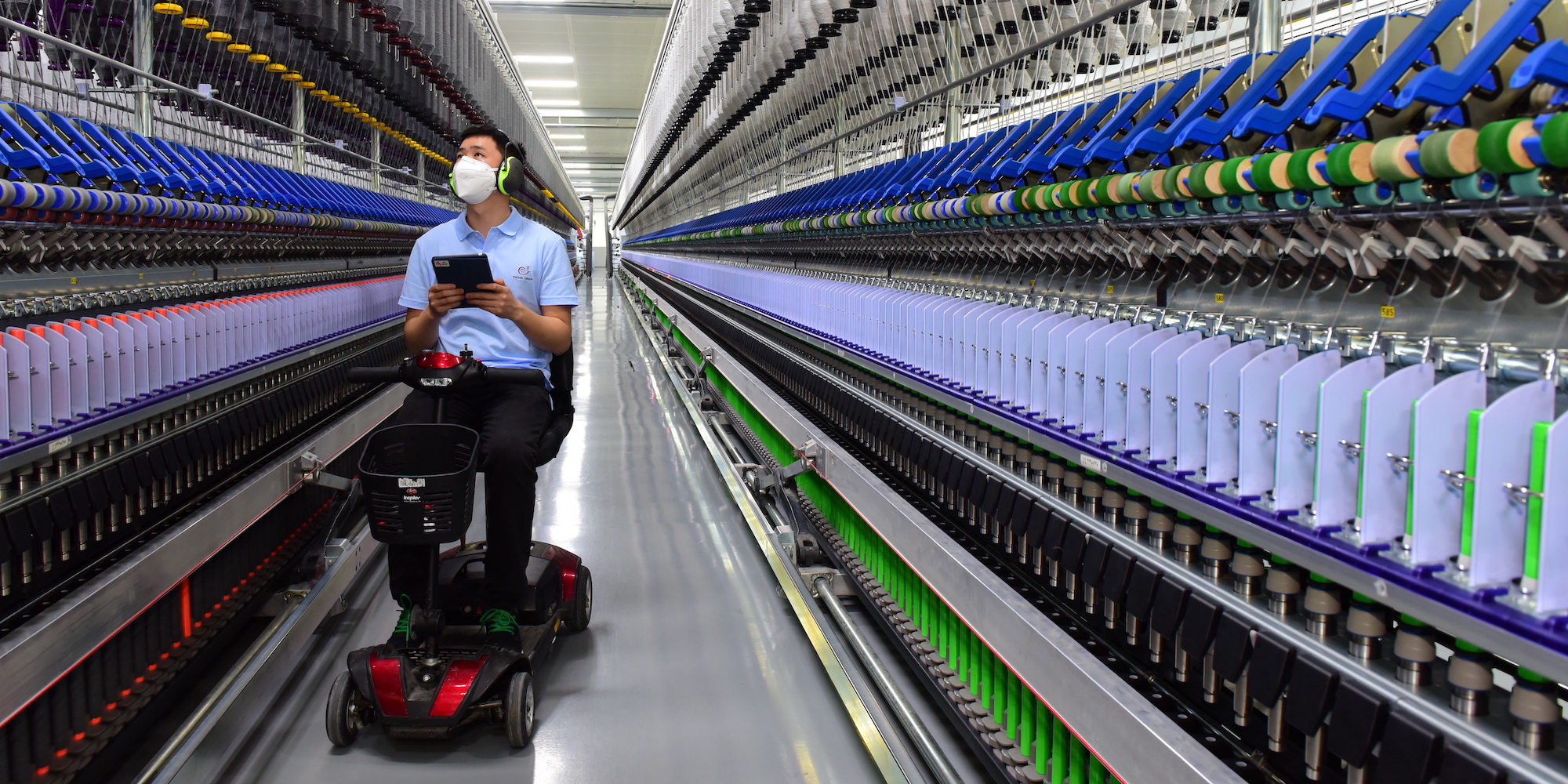
Why lean thinking is the engine of a digital transformation
FEATURE – The goal of your digital transformation is not only to develop new technologies and innovative processes, but to turn your people into the kind of "smart creatives" who will lead your firm into the future. Lean will get you there.
Words: Régis Médina, Lean IT Coach, Operae Partners
For the past few months, I have been lucky enough to work on both sides of the digital landscape: on the one hand, I worked with leaders of very large IT organizations trying to find a way to better serve their customers; on the other, with small companies run by young digital experts.
These two experiences showed me a number of features of a digital transformation that, in my opinion, have been overlooked in the current debate. Specifically, I am now convinced that lean thinking can give a significant contribution to companies that are trying to carve out a place in the digital world.
But let's go one step at a time and start with the problem to be solved.
WHAT DOES "DIGITAL" MEAN TO YOUR COMPANY?
In just a few years, IT has completely invaded our every-day lives. Companies have had to find clever ways to adapt and have started to use new technologies to offer an ever greater customer experience. Think of Uber, for example: these days it takes 20 seconds to order a cab, which will normally come in less than five minutes. A decade ago this was unimaginable.
At the same time, technology is radically changing the way customers interact with companies. First of all, customers are now in complete control – they decide what they want, where and when they want, how they want it delivered – and it is no longer up to organizations to "push" products and services out. It's the customers that pull the product and service they need, when they need it.
Secondly, customer expectations are higher and higher. The service a company provides must be simple, cost-effective, instantaneous, transparent and perfectly tailored to their specific needs. And you cannot ignore these requirements, because if you do, they will use social media to voice their complaints.
The main consequence of this momentous shift is that IT now has a new role: it is no longer a back-office support function, but a major channel of communication through which customers interact with your service.
Organizations need to better integrate the IT function and the rest of their processes, in order to become more competitive in the digital world, and they need to learn how to do it quickly because new competitors are always on their way – hundreds of innovative digital startups are born every day.
THE COMMON REACTION
There is a common pattern that companies tend to follow as they attempt to adapt to the new, digital world: they build a brand new App and put it up for sale on the App Store, most of the time only to see it trashed by users shortly after.
The poor performance of their App normally convinces the organizations that their processes also need to change, which normally results in the adoption of agile methodologies and in the use of modern technologies, such as big data or cloud computing.
The newly introduced processes and technologies, however, rarely live up to expectations. After an initial period of excitement, product innovation and company processes don't get any faster, quality problems continue to plague the service provided, and a few months later people are already wondering what the next solution might be.
The reason for this is that these companies are trying to embrace a new way of thinking and survive in the digital world using the same old approach (that made them obsolete in the first place, one might add). We are not delivering as expected? Just change the tools we use and the processes we run!
However, this is not how modern digital companies think.
THE ANSWER? YOUR PEOPLE
Let's take Google as an example.
The founders say that, when they started, they rejected the traditional approach to management and decided to start from two basic principles instead:
- Focus on the user – If you have millions of satisfied users, everything else will come naturally.
- Hire smart people and give them freedom – freedom to experiment, to look for solutions, to satisfy customers, etc.
And it's now clear that what many companies are missing today is that critical second: people.
Google give us a great description of the type of professional they define as "smart creative": someone who prefers getting her hands dirty than spending hours upon hours in a conference room; someone who loves users and technologies; someone who is able to make things happen but who is also analytical and understands the business side of things.
The single most important ingredient in the digital transformation is to have this kind of people by your side, but be warned... they are not easy to find. And there is more. Suppose you find a few... how long do you think they will stay if you force your tools and processes onto them?
This is why it is important to start with what you have: the key is to try to turn everyone in your organization into a "smart creative." And this is exactly what lean thinking can help with.
WHY LEAN IS THE ANSWER
Lean teaches us that we must develop our people before we develop our products.
The first step in that direction is to let go of the old model of a manager giving his team the solution (tools and processes) and expecting compliance.
Indeed, lean provides a new approach to management that aims to develop and nurture creativity and is based on a set of specific actions:
- Communicate your vision to your people – What do you want for users? How do you create value for them? What will make your users smile?
- Define clear goals – This can mean many things, from improving customer satisfaction to decreasing lead-time to reducing the number of defects or the volume of support tickets sent to the help desk.
- Let problems show – Ensure customer problems are tracked and analyzed, and select problems to be solved one by one. You don't need fancy tools; you just need to listen to your customers.
- Give individuals the power and ability to solve problems – Coach your people, teach them how to use the Plan-Do-Check-Act approach to solve problems the right way. The objective is to make individuals own a problem, engaging both their brains and hearts into solving it. Meet with your users and create a relationship with them, understand their problem, gather facts, dig into technical root causes, and continuously improve your service.
We see it in every lean transformation: this is the only approach that can turn people into smart creatives and develop a culture of continuous, incremental improvement. And what do digital companies rely on if not people who are constantly looking for solutions to customer problems?
A GEMBA EXAMPLE
The CIO of a very large organization decided to make lean one of the pillar of the company's digital transformation. He was obsessed with customer satisfaction and asked his employees to try to understand every problem the users encountered and flagged up.
Among his (internal) customers there were a number of employees from one of the company's branches, complaining about a number of IT-related problems. A branch manager, for example, was reporting that every week he received an email stating that many of the PDF files sent by his branch to the archives were incorrect. He therefore had to leave his office, go downstairs, look for each of the files and compare them with the paper versions, just to make sure that everything was in fact correct. It was a colossal waste of time, he complained.
As per the CIO's request, the IT manager in charge of the archiving system took on the problem in a lean way. He started by getting out of the building to go to meet the user. He tried to understand his position, but also what kind of impact on the business that problem could have.
Looking into the technical reasons why the problem was occurring, he discovered that many of the files were rejected because the scanner was producing a low-quality image. He dug deeper and realized that this was due to a maintenance failure on the large printer used in the office. Digging even deeper, he understood that this was because the maintenance contract for that printer did not include the scanner.
Following his root cause analysis, the IT manager got the problem fixed and then tried to find out who could benefit from this improvement elsewhere in the company. The branch manager said it was the first time in 20 years that an IT person solved something for him, which of course made the IT manager very happy.
What's important here is not so much the fact that the scanning problem was solved, but that the IT professional adopted a completely different approach to dealing with a problem: he had become more "user smart," wanted to understand the impact of the problem on the business, formulated and tested hypotheses, dug into the technical problems, made connections between them, and so on.
THE ENGINE OF A DIGITAL TRANSFORMATION
As the example above proved, problem solving is very effective when it comes to teaching people in our companies to "get creative" (or, rather, smart creative). If your business is to survive and thrive in the digital world you must create an environment in which people are constantly using their creativity to solve problems.
The main driver of a digital transformation is not an App, the use of the agile methodology or of big data, but the ability to listen to and solve each of the problems your users encounter.
This is a five-step process, which you can start to adopt today:
- Define user-focused improvement metrics
- Gather all customer feedback
- Deal with problems one by one
- Coach each individual in solving problems the right way
- See your people grow and your customers smile
Do this every day and you will allow your company to confidently step into the digital world.
THE AUTHOR

Read more


FEATURE – Repetitive flexible supply is a very effective method to level production scheduling, but as a FMCG company in the Netherlands found out, sometimes a number of conditions must be met before the approach becomes viable.


FEATURE – Sometimes you just need to get creative: as part of its flexible manufacturing model, Esquel introduced a new role on its shop floor – the “mangineer”.


CASE STUDY – An elementary school in Budapest is trying to bring innovation to the education by harnessing the power of lean thinking combined with a solid digital strategy.


FEATURE – Based on their experience supporting the stellar growth of Aramis Group, the authors discuss the role of leaders in shaping minds and behaviors and constantly challenging themselves to be the best example they can.

